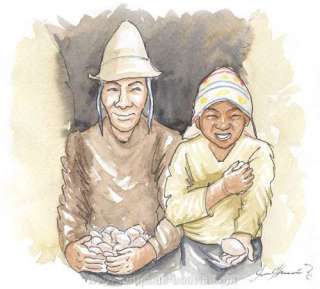

Peoples and languages of Bolivia
As mentioned above, Bolivia is characterized by its diversity, from region to region, but also from people to people.
The country is officially recognized as plurinational by the 2009 Constitution: the ethnic minorities are numerous, 27 according to President Morales (Aymara, Quechua, Moxo, Guarani, Chiquito, Pano, Chipaya, Arauco, Chapacura...).
Their existence often poses problems for the leaders: demands for differentiated treatment, the right to self-management, the recognition of a parallel judicial system are common, and this even extends to separatist upheavals that frequently shake the national political scene. A look back at the delicate situation of a country torn by the centrifugal force of its incredible diversity.
The social construction that makes it possible to become aware of an ethnic identity, and then to claim cultural, and therefore political, specificity, began in the 1970s and 1980s. Emerging from the ethnic, social, economic, political and historical resentment of the domination of the white and European colonial elite, the indigenous people began to organize themselves to demand the recognition and revaluation of their culture. They are basing their demands on a reappropriation of their history and of the peoples they are heirs to, despite the demographic, social and moral decline that colonization represented.
The Aymara people is one of the most organized and vindictive on the continent. Trade unions and representatives of rural Aymara communities are feared for their intransigence and their ability to mobilize the masses in the event of conflict (remember that El Alto is mainly populated by rural Aymara migrants, who are therefore a stone's throw away from the country's political institutions).
In the Amazon, the isolation in terms of communication and transportation of a number of villages has allowed the preservation of their cultural identity and their own social organization. Even more than the Andean peoples, the social and cultural specificities of the different human groups inhabiting the Amazon remain relatively intact. One of the great dangers facing these peoples are the hydrocarbon extraction projects or, as recently, the construction projects of very high traffic roads, for example between Brazil and Santa Cruz. This project would have destroyed an entire part of the indigenous territories; but strong demonstrations, true national solidarity among indigenous peoples (the Aymaras demonstrated in solidarity with the Amazonian peoples), as well as appeals to international allies, etc., have succeeded in putting a stop to this project. This shows the organizational strength of the indigenous peoples in Bolivia in particular.
The arrival to power of Evo Morales was extremely strong at the symbolic level. A coca grower, coming from the Andean culture and tradition, has arrived at the top of a state inherited from the colony; it is a true recognition for all the people who practice the ritual of offering to the Pachamama, who chew coca leaf, and recognize the power of the Apus as much as that of the Virgin Mary. The intrinsic contempt for the colonial elite's domination in all spheres (economic, social, and political) is receding, and the pre-Hispanic heritage is being rehabilitated.
Morales also recognizes the plurinational character of the Bolivian state, the different peoples and their cultures as a richness of Bolivia, putting his finger on an aspect that the white elite preferred to forget, bathing in the illusion of being a European country itself.
In spite of everything, the supposed equality between Bolivians of different ethnic origins remains a declaration of good intentions, real only on paper, because of the discrimination, racism, and the very unequal distribution of wealth that continues to exist in Bolivia.



